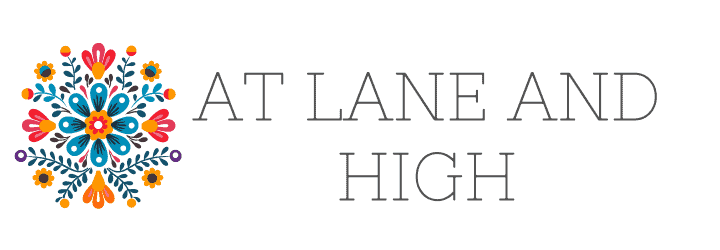Designers often look to wainscoting when looking for something to add interest and style to a room. Today I will break down six different wainscoting styles that you can use in your home.
I have used different styles of wainscoting in my home and it adds a lot of character. If you have really tall walls then adding some wainscoting can be very dramatic. Let’s discuss the different kinds so you can decide which will be right for you.
*This post contains affiliate links. For more details see my full disclosure.
What is wainscoting?
Wainscoting started back in the 1700’s in England as a way to insulate homes. Today we use it to add character and style.
Traditionally wainscoting is installed 1/3 the way up the wall. Early homes had 12 foot ceilings so the wainscoting would go up 4 feet.
Modern homes more commonly have 8 or 9 feet ceilings. Wainscoting installed today typically goes up about 30-36 inches.
Is wainscoting still in style?
Oh, you bet your britches it is! Wainscoting is a timeless classic design element. But it has had a surge in popularity recently.
In fact, I would hazard to say that it’s become very popular in the last 10 years. The more modern take is to use wainscoting in different ways.
Using it in taller heights, sometimes all the way to the ceiling. Making a focal wall with wainscoting instead of using it all over the room. There are so many different options you just have to get creative.
Wainscoting Styles
Raised Panel Wainscoting
This is the earliest type of wainscoting used and is most often used in formal rooms such as living rooms and dining rooms.
Raised panel wainscoting has a panel on the wall and an additional panel inserted in the center, often trimmed with molding to add a sloped edge.

Board and Batten
Board and batten is a traditional style of adding wainscoting. There is a board attached to the wall and where the seams are battens are attached. Battens are typically 4-6 inches wide and are basically vertical pieces of wood.
There is a top board as well that goes horizontally across all the vertical boards. Additional battens can be installed for style purposes.
I have two examples of board and batten. I did this method in my dining room but in a much taller fashion. Instead of going 1/3 the way up the wall, I went 2/3 the way up for a more dramatic look.
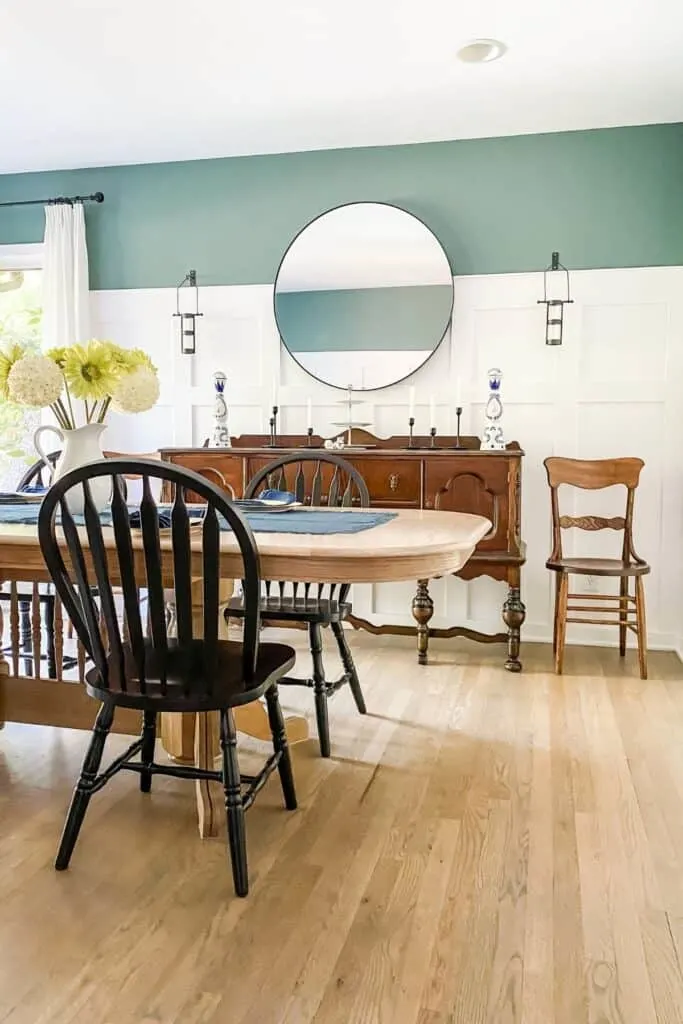
I also did a board and batten in my stairwell creating boxes with the battens for a unique look.
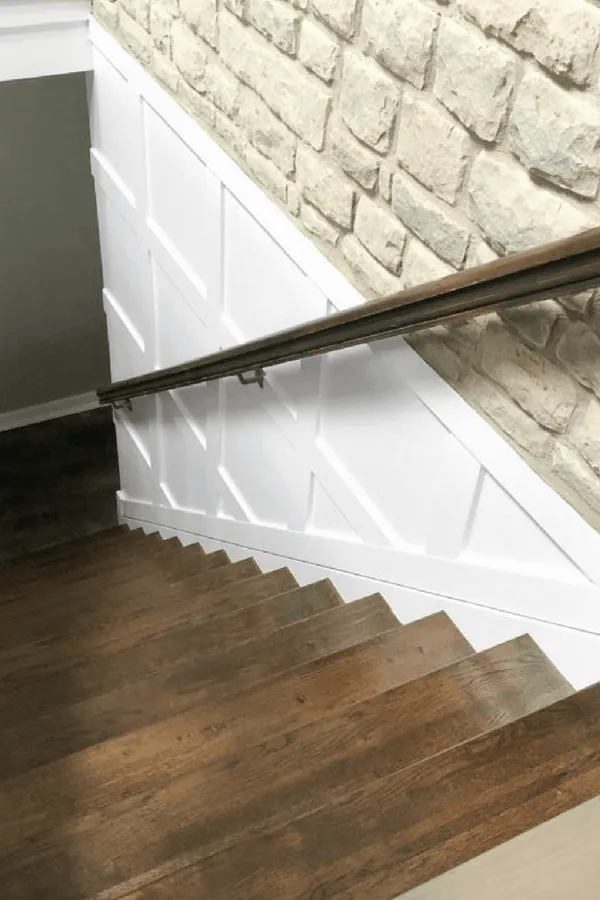
Flat Panel Wainscoting
In flat panel wainscoting, the panels are installed behind molding and appear flat. It’s a recessed panel. Showing a photo is easier than explaining this one.
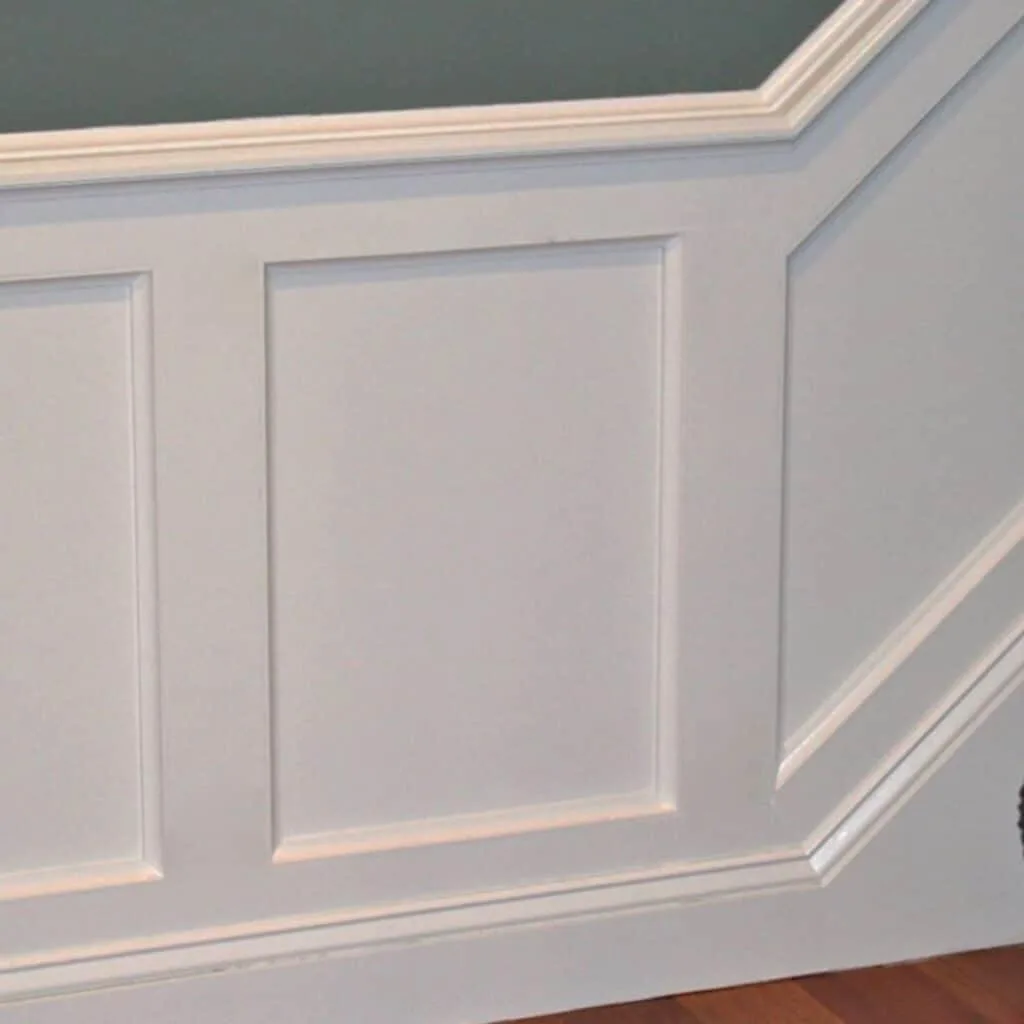
Overlay
Overlay is a combination of flat panel and raised panel. Seem confusing I know, bear with me.
In overlay, a flat panel is fixed to the wall and raised panels are placed on top trimmed with molding.
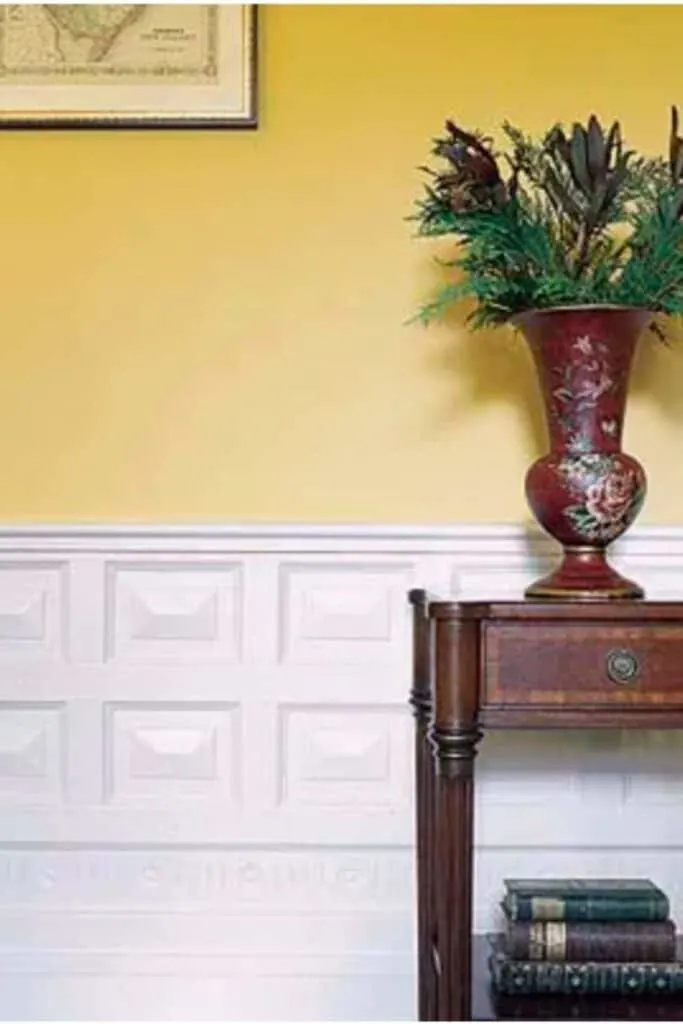
Beadboard
Beadboard is a classic and timeless wainscoting that has long grooves with raised beads spaced about an inch or two apart.
Originally beadboard was individual boards but modern technology has created a panel of beadboard you can purchase in a 4X8 foot sheet.
I added beadboard to my entryway wall to protect the drywall from the wear and tear of coats, shoes and my dog. I added it a little taller than the traditional beadboard wainscoting would be so that I had somewhere to hang coats.
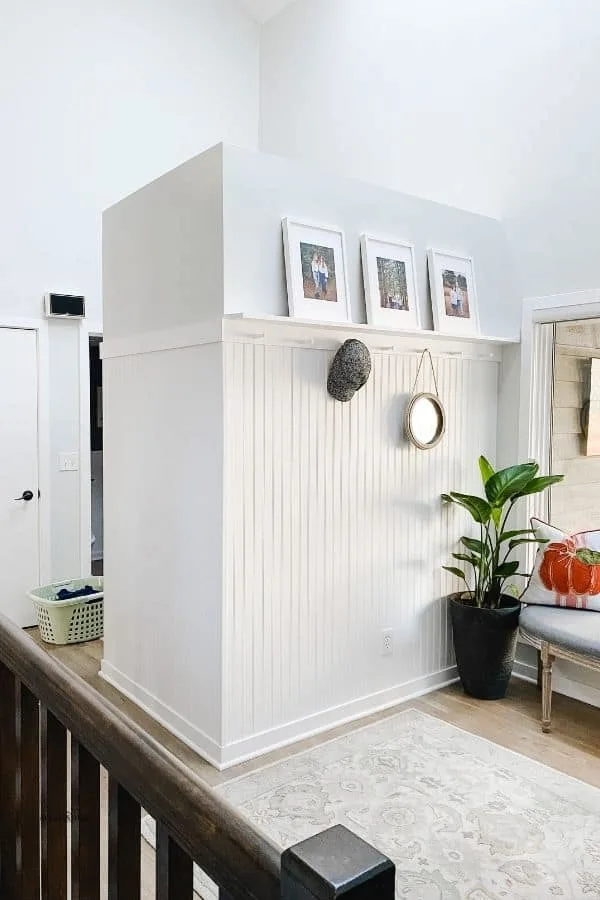
Shiplap or Tongue and Groove
This is a more modern method of wainscoting. Shiplap became very popular with the show Fixer Upper. It’s actually wood that was used to attach plaster or drywall to before modern methods were invented.
In the show, Johanna Gaines revealed this wood shiplap and used it instead of drywall. It can be stained but more commonly it is painted.
True shiplap has a tongue and groove edge and that’s how it’s connected. You can find other tongue and groove which is much thinner than shiplap and is often installed vertically whereas shiplap is installed horizontally.
I have vertical tongue and groove boards in my powder room. The individual pieces of wood are about 2.5 inches wide.
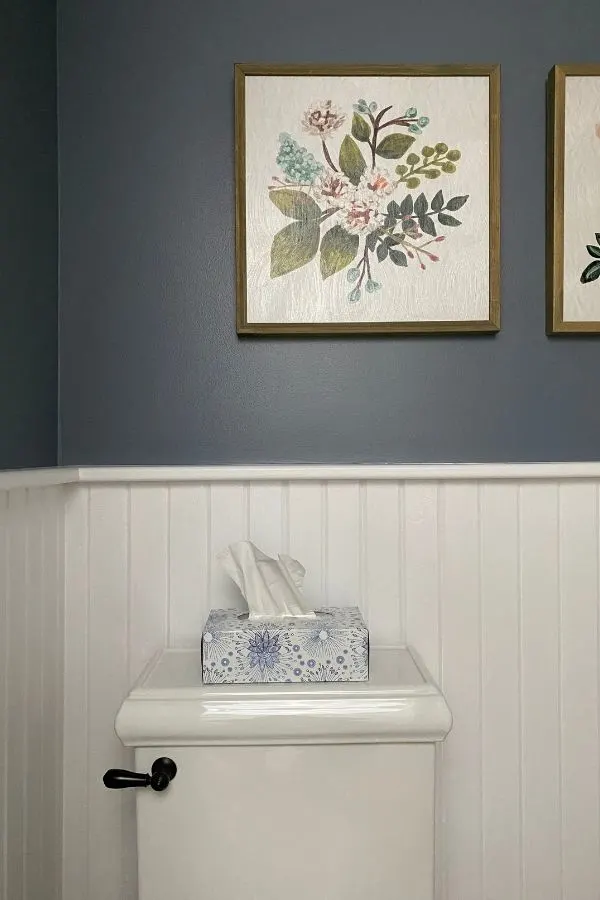
What is wainscoting made of?
Original wainscoting was made of wood and was very expensive. Early on only those with wealth would have wainscoting in their homes because of the expense.
Modern materials and manufacturing have brought down the cost and made these materials easier to install than wood.
MDF is a common wood used in wainscoting. MDF stands for medium density fiberboard. In a nutshell, MDF is a product made of wood shavings and glue that has been pressed together so tightly they create sheets of wood.
MDF cannot be stained, it’s a paint-only material.
Vinyl is also a common product used in wainscoting. Vinyl is waterproof which makes it a great choice for basements. The beadboard I installed in my entryway is made of vinyl. It’s also a paint-only product.
If you want stained wainscoting then you need to go with the traditional material, wood.
What type of paint finish should you use?
I highly recommend using semi-gloss paint on any wood-like wainscoting. It’s easy to clean and won’t scuff easily like flat paint will.
On all the wainscoting in my home, I used paint from Home Depot that is a mixture of both latex and oil-based paint. It’s called alkyd paint and it comes in satin and semi-gloss.
Does wainscoting increase home value?
As a Real Estate Agent, I can tell you that yes it certainly does! The addition of wainscoting adds character and will make a home much more desirable.
Final thoughts on Wainscoting Styles:
I highly encourage anyone to add wainscoting to their home to increase the value. It’s a timeless look and you can give it a modern twist. It’s a win-win situation!
As a licensed Real Estate Agent and an avid home decorator, I strive to give my clients the very best I can when it comes to staging, selling, and decorating their homes. I have lots of experience with paint color choices and love to DIY my home so I can have everything just the way I want it. I share my ideas and projects with the world in the hopes that I can help others have their homes just the way they want as well.
